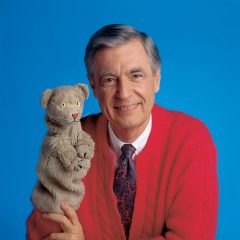Waking from wild and fantastical dreams, I try my hardest to write down all their details, attempting to unveil the hidden meaning within for myself. Yet, if I had lived before the 20th century, I may have been revolted and troubled by the images conjured up during sleep. In the early 20th century, Carl Jung revolutionized the world of psychology by founding analytical psychotherapy, pioneering the idea that the exploration of the psyche, including dreams, could lead to greater self-understanding. It is little wonder that the man himself attempted to make sense of his own interior world through what he called “active imaginations” and penned The Red Book, now on display at the Rubin Museum of Art until January 25, 2010.
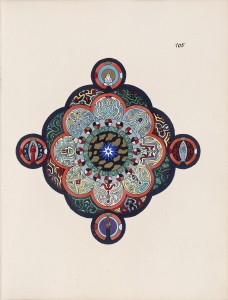
I first read of the exhibition of The Red Book at the tail end of a fascinating feature article in the New York Times Magazine of September 20th detailing the book’s history and its road to publication. Jung’s most intimate of memoirs – digitized, magnificently reproduced and annotated (and now on sale) – had lain in vaults of the Jung family since the great psychotherapist’s death. It was only after perseverant convincing by Sonu Shamdasani, historian and soon-to-be Red Book editor, that the family chose to share what is regarded as the most influential unpublished work of modern psychology.
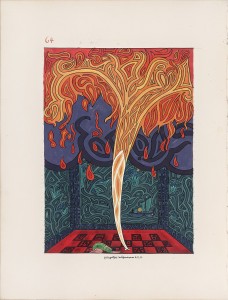
The excitement at the exhibit at the Rubin Museum of Art was palpable. The intimate display unveiled the process behind the creation of The Red Book, revealing the evolution of imagery, preliminary notes as well as finished illustrations. Two copies of the 205-page book itself (or at least the digitally reproduced and annotated version of it) is also on display for perusal. You can hold the book, flip through its pages and immerse yourself in the mysteries of its creation.
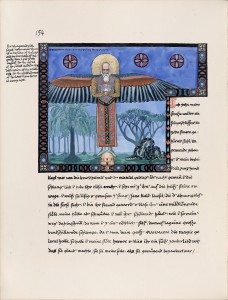
The book is something of an illuminated manuscript, with text written in elegant calligraphy and illustrations very attentively and elaborately produced (amazingly by Jung himself!). The book is nothing short of a work of intense meditation. The Rubin exhibit reveals a very rich exploration of personality and spirituality that they aptly call the “creation of a new cosmology.” The imagery reveals an amalgam of mythology, philosophy and religion from around the world. Jung created uninhibited diagrams and illustrations culled from his very learned mind, ranging from mandalas, to hieroglyphic-like languages to giving form to imagined figures.
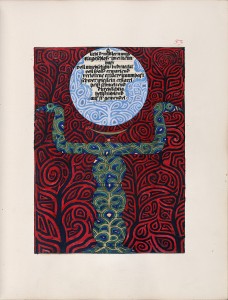
In observing these images, I felt that I was peering into Carl Jung’s rich interior life, full of imagination and creation. Ultimately, the display of The Red Book captivates the audience more by the inner logic of the work than the artistic value of the elaborate illustrations. Regardless, The Red Book seems to have captivated the fascination of its readers since it unearths new territory to discover the mind of Carl Jung himself. And, indeed, with the publication of a long hidden book written by one of psychology’s greats, the fascination and discovery has only just begun.


